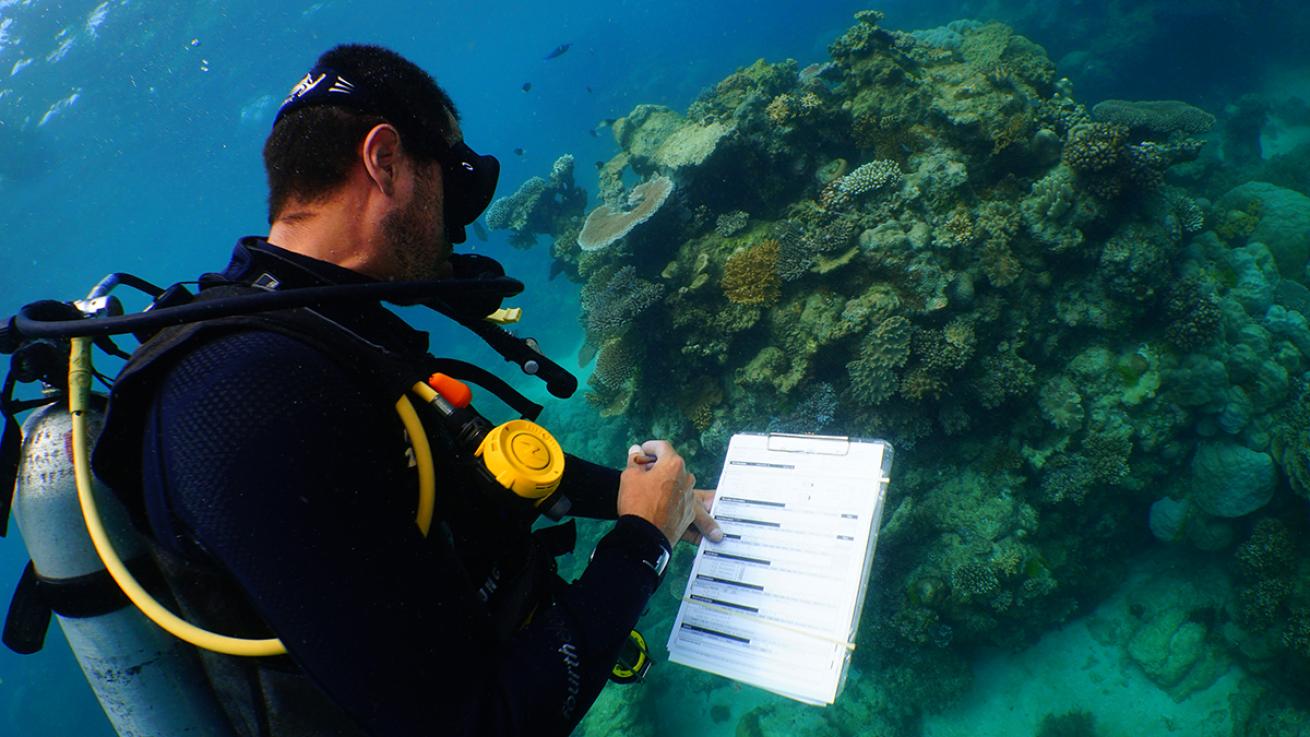Coral Reefs Star in Australian COVID Recovery Effort

Courtesy Quicksilver GroupA diver surveys coral in a Cairns reef for Quicksliver as part of an Australian program to power economic recovery through marine restoration.
Australian dive pros are monitoring reefs and scooping up crown of thorns starfish to power COVID economic recovery.
A $3.2 million program is enabling seventeen Queensland tourism businesses, including eight PADI dive shops, to pay their staff to take part in restoration and monitoring activities, administered through the Great Barrier Reef Marine Park Authority as part of a $61.7 million federal COVID aid package.
This “could make really significant contributions to — not just the conservation and protection of the reef — but also...these regional towns” and the broader Australian economy, says Fiona Merida, assistant director of Reef Engagement for the reef’s Marine Park Authority.
It is estimated the aid is saving more than 300 jobs in the Great Barrier Reef tourism industry, a $6 billion industry in Australia. More than 2 million tourists take part in Australian marine activities every year, (COVID aside), supporting more than 60,000 jobs. Over 85 percent of this economic activity occurs in the Queensland ports of Cairns, Port Douglas and the Whitsundays, according to the Great Barrier Reef Marine Park Authority.
“If we can keep those professionals...on the reef, then the industry will be in the best position to recover from COVID,” says Merida, so “trying to keep them on the ground benefits everybody.”
The program began in March and will run through June. Participants are required to provide daily and monthly activity reports specific to their restoration project. The data collectected is added to a pre-existing reef monitoring program, Eye on the Reef. This database contains more than 35,000 surveys from tourists and professionals alike across hundreds of reefs, and is used to guide reef management decisions.
Quicksilver Group, one of the program participants, is paying their staff to collect and sort weekly Eye on the Reef Data, as well as conduct more granular Reef Health Impact surveys on popular dive spots like Castle Rock and Nursery Bommie.
The funding “means we can see a lot of our key staff gainfully employed rather than lose them to other industries,” says Doug Baird, Quicksilver’s environment and compliance manager. It also helps their dive guides become better acquainted with the sites where they lead tours. “It lets us pinpoint when we're more likely to see [certain animals] so we can foreshadow that with our guests… That's the thing that was really useful for us in terms of a dive brief.”
Over at Lady Elliot Island Eco Resort, staff have removed over 400 drupella snails and more than 70 crown of thorns starfish since the program began. Staff is also conducting weekly snorkel surveys at popular guests sites to scan for impacts on the reef such as damage or missing keystone species, as well as Reef Health and Impact surveys.
“This project has given us the ability to conduct surveys that our staff are already trained in and the funding needed to operate specific dives for culling,” writes Jessica Blackmore, activities supervisor at Lady Elliot Island Eco Resort, who is participating in many of the resort’s dives.
“We've got over 600 days of these activities along the reef that are going to happen within this five month period of time,” says Merida. “It's going to give us unprecedented knowledge and information” about the reef.
Dive with a Participating PADI Operator
- Adrenalin Dive, Townsville
- Aquapro Dive, Cairns
- Cairns Premier Reef & Island Tours, Cairns
- Coral Sea Dreaming Dive and Sail, Cairns
- Great Keppel Watersports, Southern Great Barrier Reef
- Lady Elliot Island Eco Resort, Southern Great Barrier Reef
- Lady Musgrave Experience, Southern Great Barrier Reef
- Passions of Paradise, Cairns
- Quicksilver Cruises, Cairns and Port Douglas










